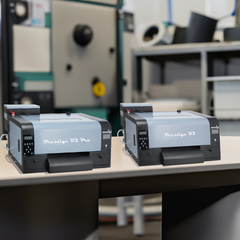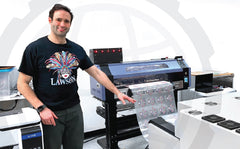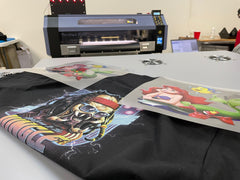Your lamp output and the stencil material itself are constantly changing so you need to monitor stencil exposure if you want a stencil that reproduces the positive.
Time alone is not accurate because:
- Lamps age and UV output changes.
- Stencils react - and stop reacting to UV light at different rates.
- UV output changes as lamps warm up.
- UV output changes if electricity input changes.
- Stencil thickness and the color and size of the mesh inside the stencil effect exposure time.
- Heat and age can effect stencil sensitivity.
- Dye in the emulsion effects sensitivity.
- Lamp to stencil distance effects exposure time.
Instead of a stopwatch, using an exposure integrator that measures volume of ultra-violet light, will assure that each exposure setting generates the same volume of light, but you still need to judge actual stencils to make sure your exposure is correct.
Under exposure doesn’t cross-link the entire stencil all the way through, so it is weak and can breakdown at the press and strong chemicals can freeze it in the mesh so you can’t remove it. Over exposure will allow UV light to bounce underneath the positive (undercutting) which can close up fine lines and halftone dots. This is why so many screen makers under expose fine detail images.
The goal is to expose long enough to completely harden a stencil so it is durable, yet not so much that fine lines and halftones close up and ink won’t transfer through the stencil.
You are probably stuck with the exposure unit you have so coating technique and choosing an emulsion speed are things you actually can control. There is photographic term “latitude” that describes how much exposure can be varied and still produce an acceptable image. Latitude varies by stencil type and faster stencils tend to have greater latitude than slower stencils which is why faster stencils have become so popular especially for low UV output exposure units. High powered exposure units with integrators can handle any speed stencil and get acceptable results.
Low UV out put and thick stencil is like trying to cook a steak with a 100 watt bulb.
High UV output and fast stencil material means very short exposure times that change as the lamp heats up.
Erratic coating thickness by the screen maker means erratic stencils.




